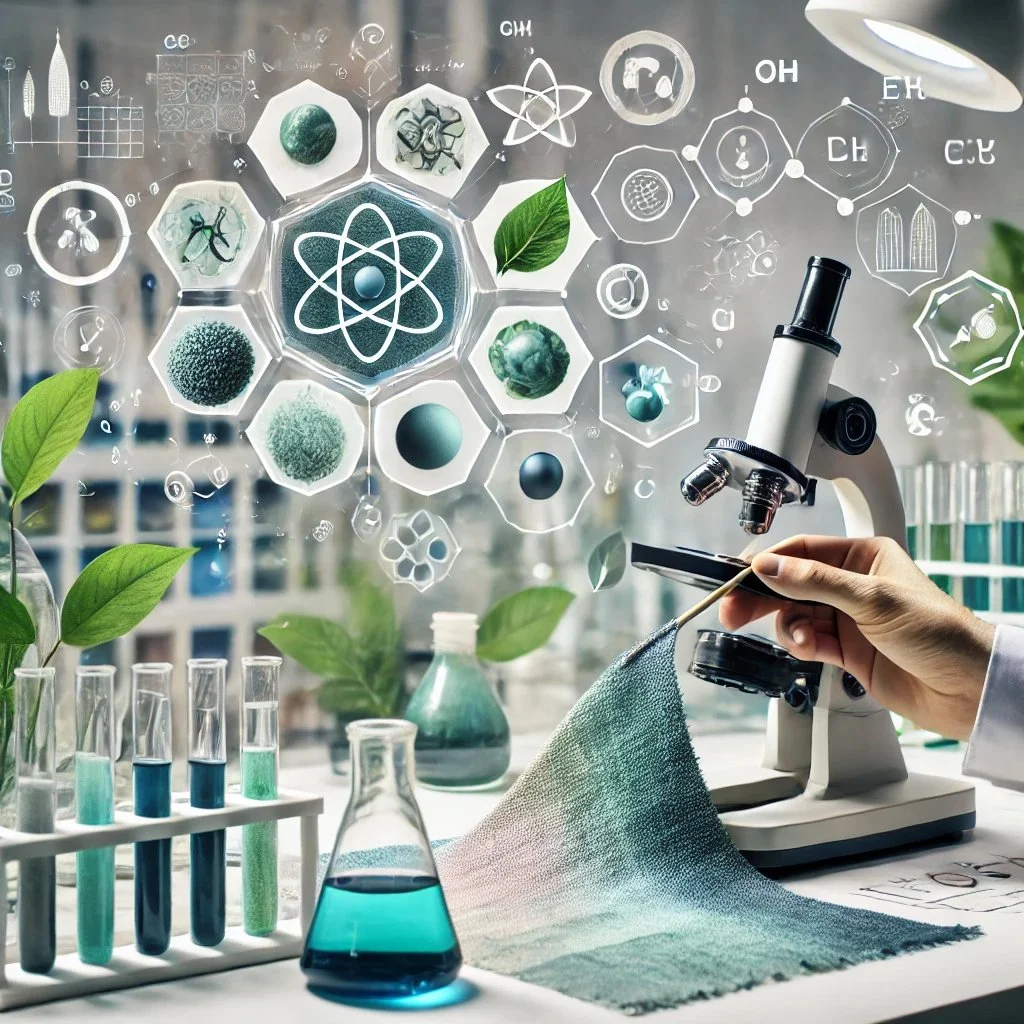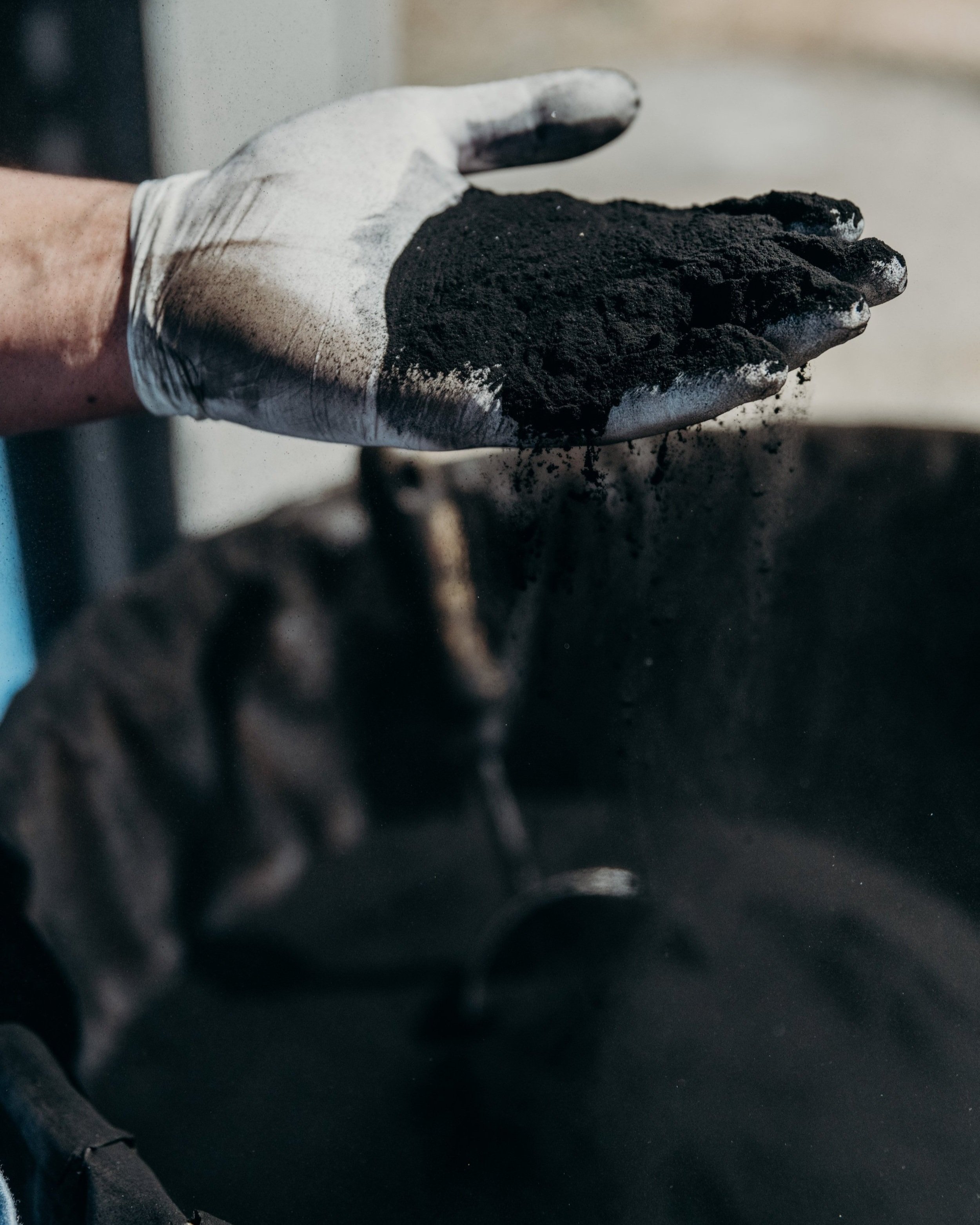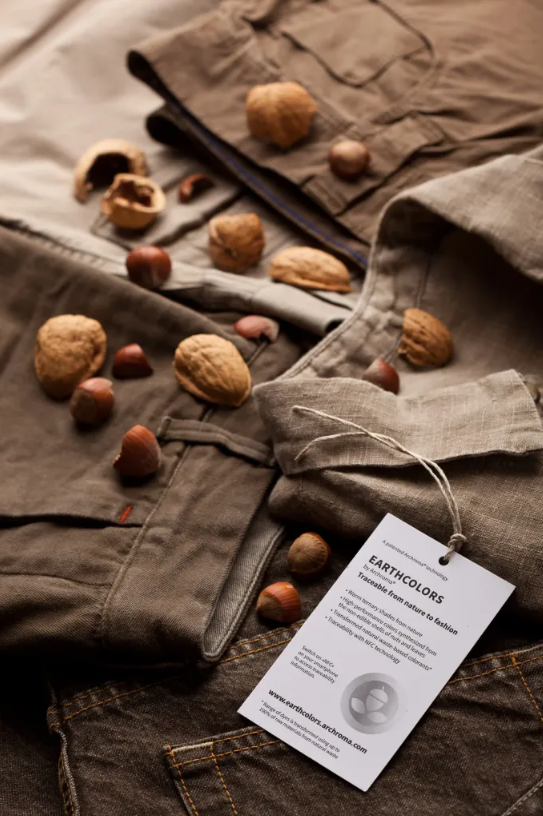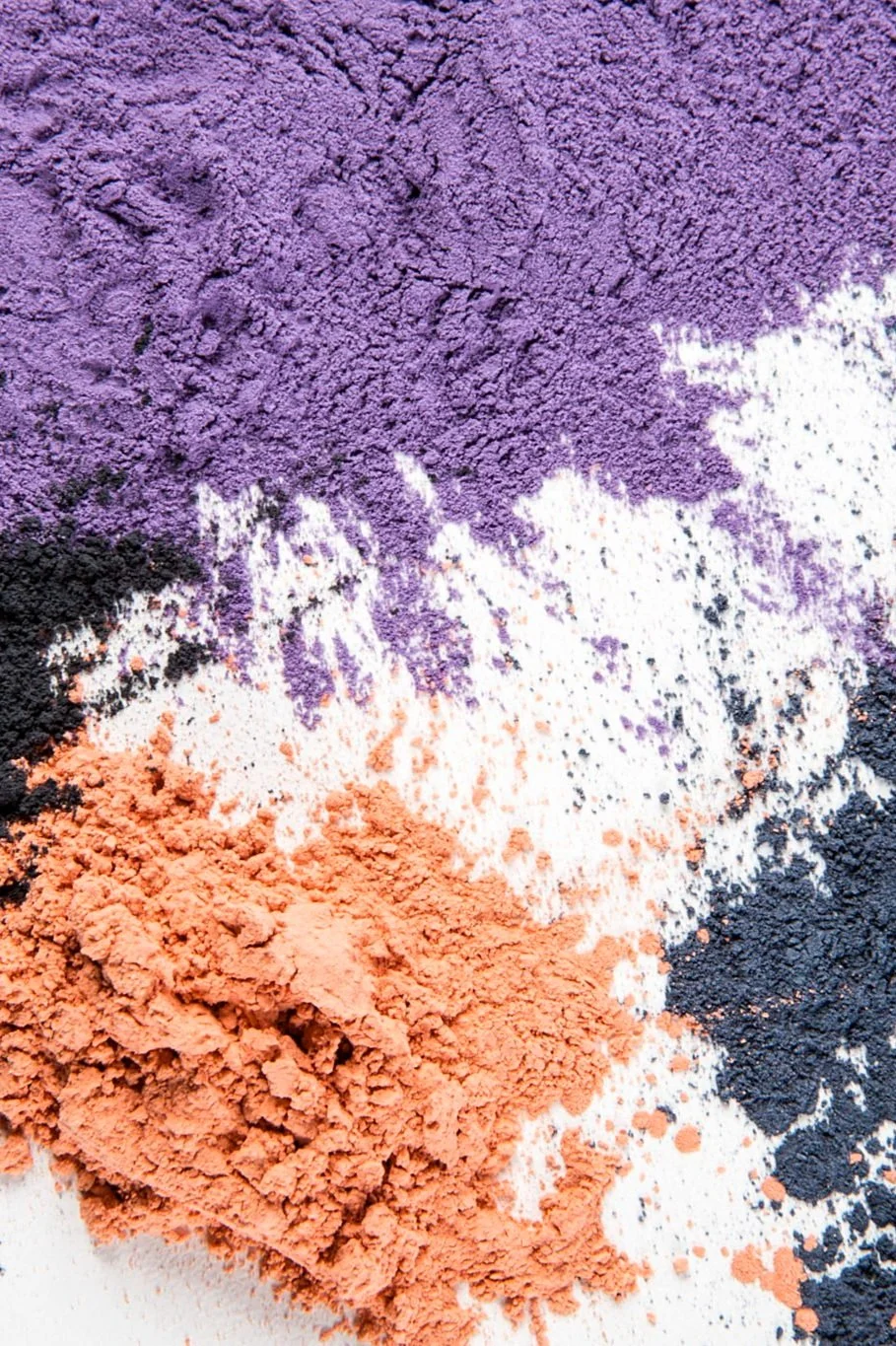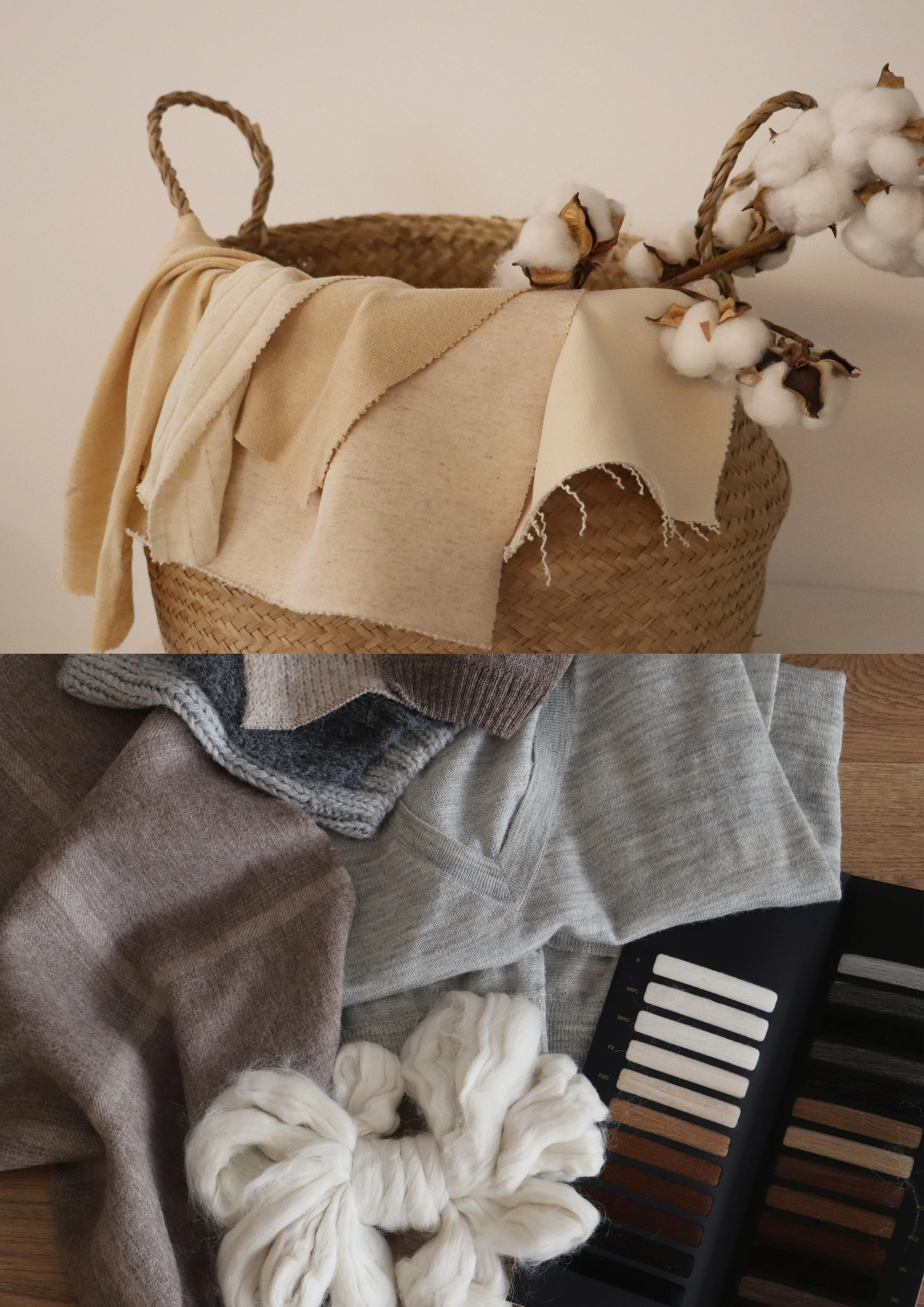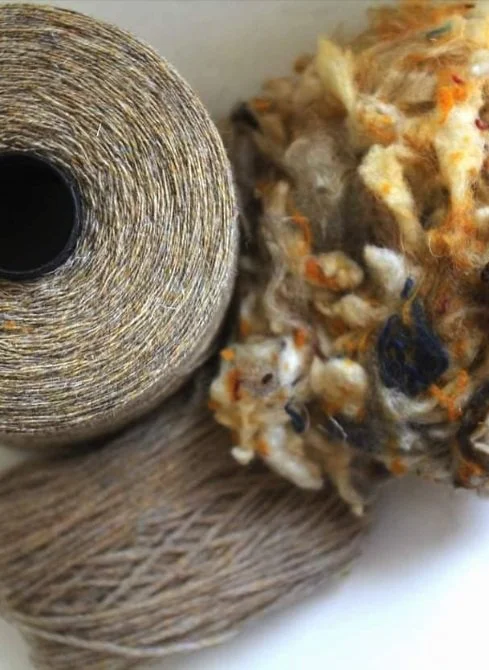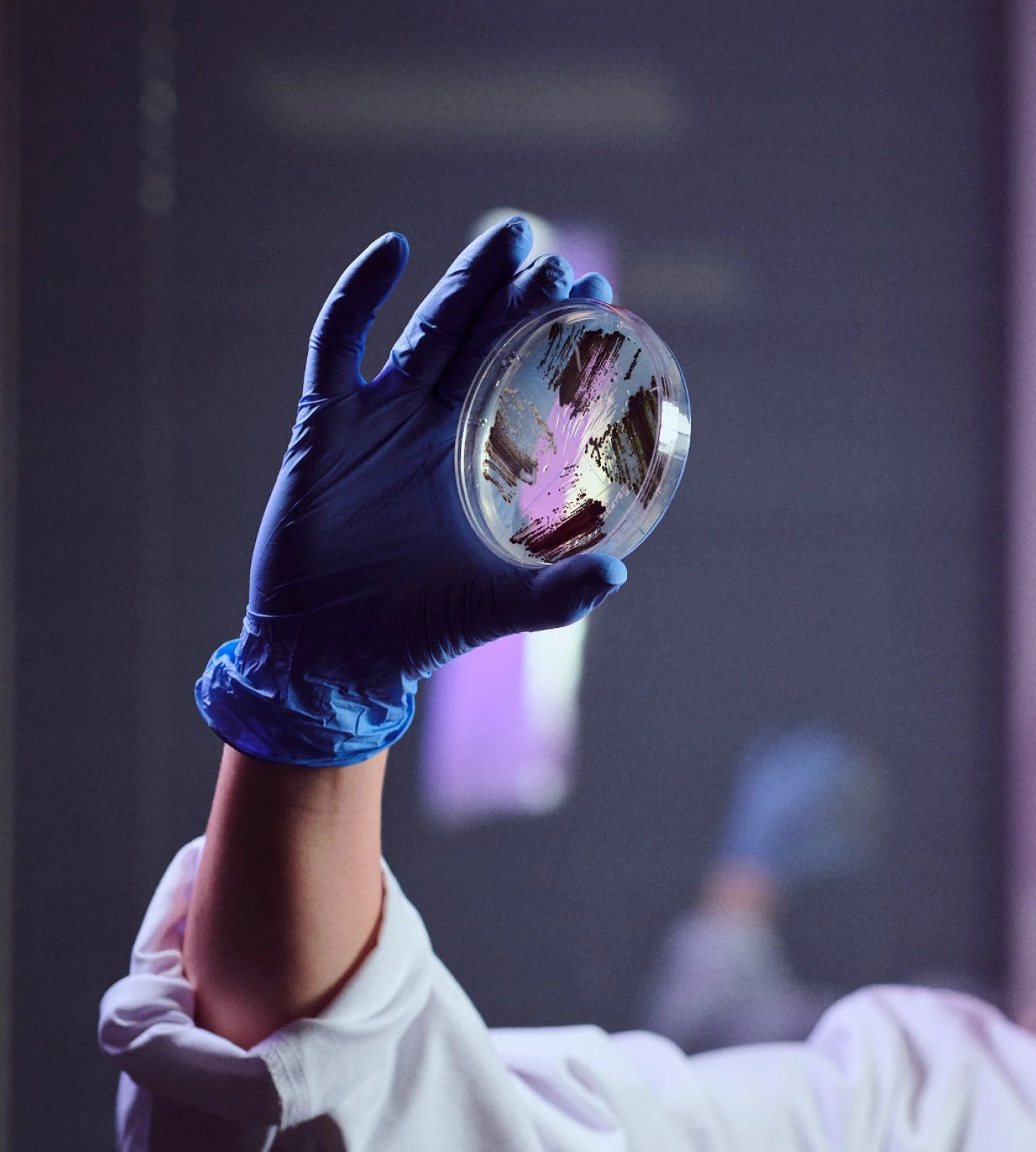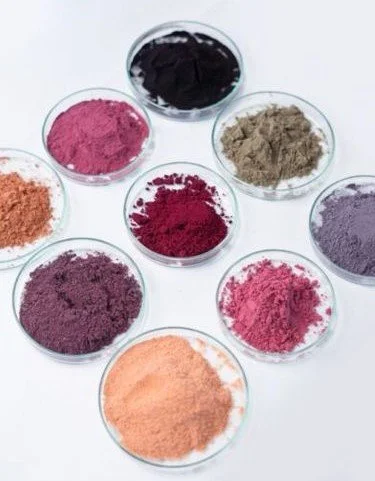Reframing Textile Dyeing
Dyeing is one of the most energy and chemical-intensive processes in garment production. It is essential to prioritise reducing this impact and to carefully evaluate the partners we choose when building supply chains. The environmental footprint of dyeing and laundry facilities varies significantly depending on the processes they use and the countries in which they operate.
New Technologies Are Available to Us
Making informed decisions during the design phase is vital for reducing and managing our environmental impact as a business. At Win-Win Textiles, we actively encourage the adoption of innovative dyeing technologies in collaboration with our partners.
We have prepared an overview for you below. Portugal offers advanced processes that are readily available to brands and can be implemented sooner than you might expect.
Understanding the Environmental Impact of Garment Production
It is essential to become more aware of the environmental impact of each stage in the garment production process. An insightful Swedish study: Environmental Assessment of Swedish Clothing Consumption - pdf for download here
This study, conducted in 2019, builds on a 2015 study by Roos et al. It was funded by MISTRA, The Swedish Foundation for Strategic Environmental Research and was developped by RISE Research Institutes of Sweden AB (RISE AB), a research institute fully owned by the Swedish state, and CHALMERS, The University of Technology in Gothenburg.
The report’s findings are not unexpected, but they quantify key issues, offering valuable insights into areas that require the most attention. While this post focuses on dyeing and wet processing, it is important to consider the following areas as well:
Transparency and Traceability
Build full visibility into your supply chains. This is the first step towards understanding and calculating your brand’s environmental impact.
Renewable Energy and Chemical Management
Prioritise partners who use renewable energy sources and implement improved chemical management practices.
Water Management
Be aware, which fibres & processes have the highest water consumption and focus on the most responsible processes: cotton versus regenerated cellulosic fibres, digital versus conventional printing, pigment digital printing versus reactive, washing with nano-bubbles versus conventional, new dyeing methods or recycling to avoid new dyeing.
Fibre Selection
Be thoughtful and critical about the fibres you use, especially how you blend them in yarns and fabrics.
Recycled Materials
Increase your use of recycled materials wherever possible.
Supplier Influence
Leverage your brand’s purchasing power to influence suppliers, favouring those who continually invest in improvements and promote sustainable practices.
Adapting to EU Legislation
Embrace new EU legislation, using its frameworks and tools as strategic levers for sustainability in your business.
Consumer Education
Encourage more responsible consumer behaviour by promoting prolonged garment use and informed purchasing decisions. Doubling the lifespan of a garment can reduce its impact by 49%. Additionally, washing garments less frequently, selecting the right fibres, and washing mindfully can significantly lower water and energy use.
By addressing these areas, brands can take meaningful steps towards reducing their environmental impact while promoting more sustainable practices across the industry.
Advantages of New Dyeing Methods or Alternatives to Dyeing
The wet processing phase of fabric production consumes significant amounts of energy, water, and chemicals. However, emerging technologies aim to mitigate this environmental impact. It is worth noting that all dye houses partnered with Win-Win Textiles have made substantial investments in water treatment systems, driven in part by national and EU legislation. While these facilities draw considerable volumes of water from local watersheds, they ensure that clean, treated water is returned.
In terms of renewable energy, most of our partners in Portugal, including those involved in yarn spinning, fabric production, cutting, and sewing, are increasingly adopting solar energy. However, the transition to renewable energy is progressing more slowly in dye houses, where the primary energy sources remain gas and wood pellets for water heating.
New dyeing technologies operate with lower water temperatures, reduced water usage, minimal energy consumption, and significantly fewer or almost no chemicals. In many cases, adopting these innovations does not increase costs. Below, we have provided a simple overview, including comments to clarify the benefits and challenges.
LIVING INK’S Black Algae Pigment™
is a colour crafted from renewable biomass and a good alternative to replace fossil-fuelled carbon black. By using a renewable and carbon-sequestering feedstock, black algae pigments help combat climate change and reduce the ecological footprint of textile dyeing. Their non-toxic, biodegradable properties ensure safer production, use, and disposal, marking a significant step toward sustainable fashion and dyeing practices.
The footprint of conventional black dyes use pigments involving extraction and combustion of fossil fuels in the process. Petroleum-based dyes are not biodegradable, adding to long-term environmental damage.
The black colour tone will not be as intense as synthetic petrochemical dyes, however, colour fastness is good and the price is reducing significantly in 2025 as the project reaches industrial scale.
The dye method is compatible with garment dyeing in black and other colours are available for printing.
For more information read here.
BioBlack TX by Nature Coatings
is a 100% bio-based, non-toxic black pigment derived from FSC-certified wood waste. BioBlack TX offers a sustainable and safe alternative to conventional black pigments, leveraging renewable resources to achieve high-performance coloration while significantly reducing environmental impact.
BioBlack TX utilizes proprietary technology to convert sustainably sourced wood waste into a high-performing black pigment. This process involves transforming the lignin component of wood—a natural polymer—into a stable black pigment dispersion suitable for various applications.
Fossil Fuel Independence: Unlike traditional carbon black pigments produced from petroleum, BioBlack TX is entirely bio-based, eliminating reliance on fossil fuels.
Non-Toxic Composition: BioBlack TX is free from hazardous substances such as Polycyclic Aromatic Hydrocarbons (PAHs) and Volatile Organic Compounds (VOCs), surpassing industry safety standards.
Carbon-Negative Footprint: The production process of BioBlack TX results in a net negative carbon footprint, contributing to carbon sequestration rather than emission.
Environmental Benefits:
Renewable Resource Utilization: By repurposing industrial wood waste from the lumber, paper, furniture, and flooring industries, BioBlack TX promotes circular economy principles and reduces waste.
Reduced Environmental Impact: The bio-based production process minimizes environmental pollution associated with traditional carbon black manufacturing, which typically involves significant CO₂ emissions and toxic byproducts.
Enhanced Safety: The absence of toxic chemicals in BioBlack TX’s composition ensures a safer environment for both manufacturers and end-users.
For more information read this pdf document or visit the company website.
COLORIFIX™
represents a revolutionary advancement in textile dyeing by leveraging biotechnology to eliminate harmful chemicals traditionally used in the dyeing process. The method uses DNA sequences derived from naturally occurring pigments and integrates them into microorganisms, enabling the organisms to produce the desired colours. These bioengineered microorganisms generate pigments that are directly applicable to textiles. This approach drastically reduces environmental impact by lowering water consumption, operating at lower temperatures, and avoiding toxic chemicals, offering a sustainable alternative to conventional dyeing methods.
The pricing is comparable to conventional dyes, and the method is compatible with both piece dyeing and garment dyeing processes. The colours are derived from nature, and the technology has only recently been scaled to an industrial level. While several partners of Win-Win Textiles offer this dyeing method, the available colour palette remains limited, but is evolving constantly. We can dye both natural and synthetic colours, but the possible shades possible differ between fibre compositions. Colour fastness is good.
For more information read here.
EarthColors™ by Archroma
is a line of biosynthetic dyes derived from non-edible agricultural and herbal industry waste, such as leaves and nutshells. This innovative approach repurposes natural waste materials, including almond shells, cotton plant residues, and beet residues, to produce a range of warm, earthy shades suitable for cellulosic fibres like cotton, viscose, and linen.
The environmental advantages of EarthColors® compared to conventional synthetic dyes are significant. Reduced Water Consumption: The dyeing process with EarthColors® requires less water, thereby decreasing the overall water footprint. Lower Energy Usage: The production and application of these dyes consume less energy, contributing to a reduction in carbon emissions. Minimized Chemical Impact: By utilizing natural waste materials, EarthColors® reduces reliance on petroleum-based chemicals, leading to fewer harmful substances released into the environment. Promotion of Circular Economy: Upcycling agricultural waste into dyes supports sustainable practices and reduces the burden on landfills.
Additionally, EarthColors® dyes are fully traceable from the source of the raw material to the final product, enhancing transparency in the supply chain.
The dye method is compatible with garment dyeing and the colours are given by nature’s own colour palette. The dye costs more than a conventional reactive or pigment garment dye.
For more information read here.
RECYCROM™
is an innovative dyeing method developped by Officina+39 that transforms recycled textile waste into pigment powders for colouring new fabrics. This process involves converting discarded clothing, fibrous materials, and textile scraps into a fine, coloured powder through a sophisticated mechanical process. Unlike traditional dyes, RECYCROM™ is applied as a suspension rather than a chemical solution, allowing for its use in various dyeing and printing applications, including batch dyeing, piece dyeing, and garment dyeing.
RECYCROM™ offers big environmental advantages: Resource Efficiency: By repurposing textile waste, RECYCROM™ reduces the demand for virgin dye materials and minimizes landfill contributions, promoting a circular economy within the textile industry. Reduced Chemical Usage: The application of RECYCROM™ as a suspension simplifies the dyeing process and decreases the reliance on additional chemicals, leading to a lower environmental impact compared to conventional dyeing methods. Water and Energy Conservation: The dyeing process with RECYCROM™ is designed to be more sustainable, potentially lowering water and energy consumption, which are significant concerns in traditional dyeing processes.
There are additional aspects such as Aesthetic Appeal: Fabrics dyed with RECYCROM™ exhibit a washed-out and natural appearance. Customization: Manufacturers can collaborate with Officina+39 to create bespoke colours using their own textile waste, enabling unique and sustainable colour solutions tailored to specific brand needs. The feedstock defines the colour shades (as a faded version of the original colour of the input fabric). With as little as 10kgs of textile waste you can create your own new colour. Scalability: RECYCROM™ has been developed to accommodate industrial-scale production, making it a viable option for large manufacturers seeking to adopt more sustainable dyeing practices.
The dyes are compatible with garment dyeing and can also be used for printing. Win-Win Textiles offers standard colours. The dye method works best on natural and cellulosic fibres, wool and polyamide.
For more information read here.
Mineral Dyes
for instance those offered by Dr. Petry under the PERICOLOR ECO range (for more information read here) are derived from natural inorganic pigments, including coloured salts and oxides. These pigments are sourced from naturally occurring minerals and are processed into fine powders suitable for textile applications.
Development Process: The creation of mineral dyes involves extracting and refining mineral-based pigments to achieve the desired color properties. These pigments are then formulated into dyeing agents that can be applied to various textile fibers, including cotton, linen, viscose, polyamides, and polyester.
Environmental benefits worth mentioning are Reduced Toxicity: Mineral dyes are generally non-toxic and non-allergenic, making them safer for both the environment and human health compared to conventional synthetic dyes, which may contain harmful chemicals. Biodegradability: Natural dyes, including mineral-based ones, are biodegradable, reducing the environmental impact associated with dyeing processes. Lower Water and Energy Consumption: The application of mineral dyes can be optimized to consume less water and energy, contributing to more sustainable textile production practices.
While mineral dyes offer several environmental advantages, they may present challenges such as a limited color palette and potential variations in shade consistency. However, advancements in dyeing techniques continue to address these issues, enhancing the viability of mineral dyes as sustainable alternatives to conventional fossil fuel-based dyes.
There are other producers of mineral dyes and you can consult Win-Win Textiles for further information. There are differences in the colour shades offered from producer to producer and we can respond to concrete inquiries.
Here you can see our brochure on Natural and Mineral Dyes, which shows another concept of mineral dyes.
Win-Win Textiles offers a range of completely natural and organic dyes developped by our partners in Portugal with full traceability of all processes taking place in Portugal. This is an innovative garment dyeing technology utilizing organic waste—such as roots, seed extracts, and leaves sourced from local producers—to create 100% organic and sustainable dyes.
Natural Dyes
are produced from organic waste materials, including coffee, onion, urucum, sappanwood, mulberry, walnut, sapele, and eucalyptus. This approach repurposes agricultural by-products, reducing environmental impact. Sustainable Production: By utilizing natural waste, the technology minimizes reliance on synthetic chemicals, aligning with eco-friendly and sustainable fashion practices. Colour Palette: The dyes yield pastel tones, closely resembling earth colors. While the range is currently limited, it offers unique hues that appeal to environmentally conscious consumers. In-House Production: our partner manages the dyeing process internally to ensure quality control and adherence to their sustainability philosophy. This hands-on approach allows for continuous improvement and adaptation. Colour Fastness: Garments dyed with BIO TINT may exhibit less resistance to laundering and sun exposure compared to conventional dyes. Proper care is recommended to maintain the vibrancy of the colors. Production Costs: The use of organic materials and sustainable processes can result in higher production costs, which may influence pricing.
This natural dye process represents a forward-thinking approach to garment dyeing, emphasizing sustainability and the repurposing of natural waste materials. While there are certain limitations, such as a restricted colour range and potential variations in colour fastness, the technology offers a compelling alternative for brands and consumers seeking environmentally responsible textile solutions.
You can see more information here, the available colours and download our brochure.
Undyed Materials
An alternative solution, and arguably the most sustainable of all, is to completely avoid the dyeing process altogether. Instead, focus solely on a finishing treatment to soften the fabric and provide dimensional stability, while allowing the natural colour of the fibre to take centre stage.
The concept of undyed fabrics and garments is gaining traction as a sustainable alternative in textile and fashion production. Various brands and suppliers are showcasing products that celebrate the natural hues of fibres without the environmental impact of dyeing.
If you look closely at raw materials, you will discover the stunning array of colours that nature inherently provides, eliminating the need for artificial dyes. Fibres such as cotton, hemp, kapok, nettle, linen, wool, alpaca, cashmere, soya, and regenerated cellulose all exhibit a beautiful spectrum of natural shades.
For example, cotton can range from off-white and pure white, depending on its origin and variety, with some strains naturally growing in soft brown and green hues. Similarly, alpaca fibres boast an extraordinary palette of up to 22 natural hair colours, which can be blended to create even more tonal variations.
By avoiding the dyeing process, we significantly reduce water usage, chemical pollution, energy consumption, and production costs. These savings can instead be redirected towards sourcing better organic and responsibly produced materials from certified networks, ensuring fair working conditions and a reduced environmental footprint.
Mechanically recycled textiles
Retain the original colours of the source materials, allowing recyclers to offer standardized colour palettes without the need for additional dyeing. This approach presents several advantages and challenges, particularly concerning colour aspects. This is another way to avoid dye dyeing process altogether.
Environmental Benefits: By preserving existing colours, the mechanical recycling process eliminates the need for re-dyeing, thereby reducing water and chemical usage. This leads to significant environmental savings, as the dyeing process is resource-intensive and often polluting. Energy Conservation: Avoiding the dyeing stage also reduces energy consumption associated with heating dye baths and drying fabrics, contributing to a lower carbon footprint. Cost Efficiency: Eliminating the dyeing process can result in cost savings in terms of materials, labor, and time, making recycled textiles more economically viable.
Here you can see an example of a product Win-Win Textiles offer, which is based on 100% recycled materials and you can see the colour palette.
Algadye™ by Algaeing™
Is an innovative algae-based dye technology designed to offer a sustainable alternative to conventional textile dyes. This biodegradable dye formulation is compatible with various fabric types, including synthetic and natural fibres.
Algadye™ can be seamlessly integrated into existing textile manufacturing processes without the need for additional capital expenditure or extensive retraining. The dye is applied to fabrics using standard dyeing equipment, ensuring ease of adoption for manufacturers.
Color Production: Algae naturally contain pigments such as chlorophylls and contribute to a diverse colour spectrum. The specific molecular structures of these pigments determine the vibrant colours they produce. Algaeing harnesses these natural pigments to create a range of over 25 bio-colours with high colour fastness and proven performance, as verified through third-party testing and meticulous quality control.
Environmental Advantages:
Water Conservation: Algadye’s production process saves up to 98% of water compared to conventional dye production methods.
Reduced Greenhouse Gas Emissions: The technology leads to a 70-74% reduction in greenhouse gas emissions relative to traditional dye and ink production.
Algadye is free from allergens, pesticides, and hazardous toxins, creating a safer work environment and reducing environmental pollution. Algaeing partners with sustainable algae growers who utilize vertical farming and solar energy, promoting renewable resource use and minimizing land impact. Algadye offers a sustainable and scalable solution for textile dyeing, leveraging the natural pigments of algae to produce vibrant colours while significantly reducing environmental challenges.
The dyes are compatible with piece dyeing and garment dyeing.
For more information read here.
Octarine Bio™
Is a world leading synthetic biology platform with a core mission to drive bio-based, sustainable solutions to address the most pressing planetary issues through innovation and exploration.
During 2025 the partners of Win-Win Textiles will be able to offer this dye technique, which is undergoing industrial testing now.
Octarine Bio is pioneering sustainable dyeing solutions for the textile industry through its innovative PurePalette™ technology. This method utilizes precision fermentation to produce a vibrant spectrum of nature-based dyes that can be seamlessly integrated into existing manufacturing processes.
Production Process: Octarine Bio employs advanced cell-factory engineering and proprietary enzyme technology to design custom microbes capable of producing bio-based dyes. Through precision fermentation, these engineered microbes convert renewable raw materials into high-quality pigments. The process enhances the solubility, stability, and bioavailability of the dyes, ensuring their suitability for various textile applications.
Reduced Resource Consumption: PurePalette™ dyes significantly lower water and energy usage compared to traditional dyeing methods. Specifically, they achieve a 61.5% reduction in both water and energy consumption, contributing to more sustainable manufacturing practices.
Lower Carbon Emissions:The production process results in a 69.5% decrease in CO₂-equimitigating the environmental impact associated with textile dyeing.
Enhanced Safety: By eliminating hazardous chemicals, PurePalette™ reduces human toxici%, promoting a safer environment for workers and consumers.
Compatibility with Existing Sytstems :The dyes are designed to work directly on both nac fibers without the need for additional chemicals or special conditions, facilitating easy adoption by manufacturers and reducing the environmental toll of textile production.
For more information read here.
KB COLS™
KBCols Sciences Pvt. Ltd. is an innovative biotechnology start-up based in Pune, India, dedicated to producing sustainable, non-GMO natural bio-colours for various industries, including textiles, personal care, food, and feed.
KBCols harnesses India’s rich biodiversity by sourcing specific microbes from natural environments. These microbes are cultured in bioreactors, where they produce natural pigments through fermentation processes. The pigments are then extracted and refined to create stable, reproducible biocolors suitable for industrial applications.
Reduction of Harmful Chemicals: Traditional synthetic dyes often involve toxic chemicals that can harm ecosystems and human health. KBCols’ biocolors are natural and free from such hazardous substances, minimizing environmental pollution.
Sustainable Resource Utilization: By leveraging microbial fermentation, KBCols reduces dependenced resources, promoting a more sustainable and eco-friendly production method.
Lowered Carbon Footprint: The biocolor production process is designed to be energy-efficient, conuction in greenhouse gas emissions compared to conventional dye manufacturing.
Adoption in Textile Dyeing:
KBCols’ bio-colours can be integrated into existing textile dyeing processes without much adjustments.The dyestuff is delivered as a powder to the dye house, who does not need to create a fermentation process, like is the case with COLORIFIX, mentioned earlier. The dyes are compatible with various fibre types and offer consistent, reproducable shades, ensuring quality and uniformity in dyed fabrics. They are compatible with piece dyeing and garment dyeing. The adoption of these natural dyes enables textile manufacturers to enhance their sustainability profiles, meet increasing consumer demand for eco-friendly products, and comply with stringent environmental regulations.
For more information read here.



